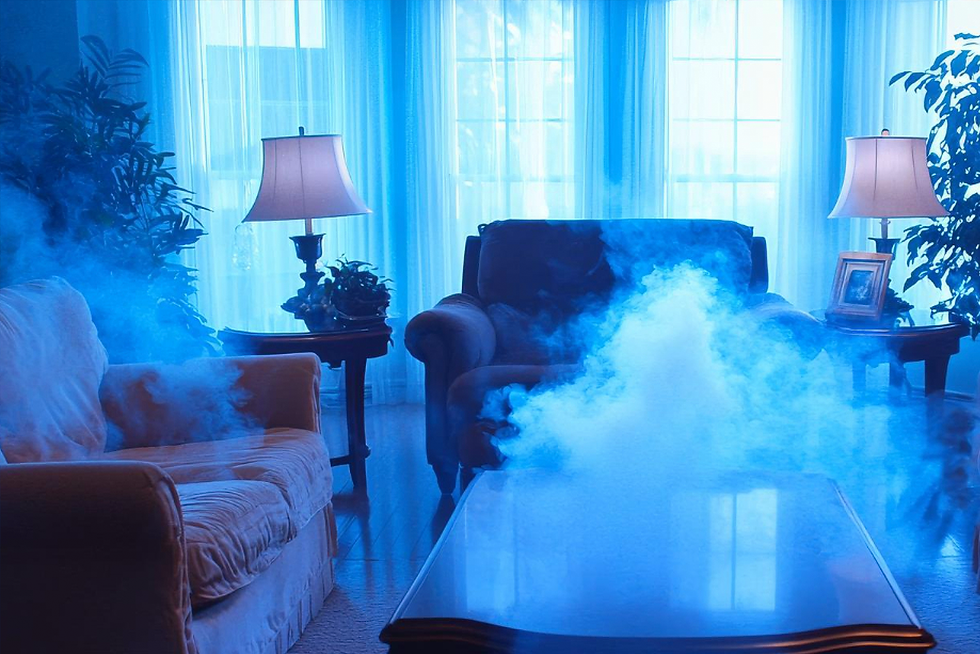“Whats In the Air you Breathe?”
- Corey Provencal

- Nov 16, 2010
- 3 min read
“Whats In the Air you Breathe?”
Your Indoor Air is invisible but it is the most basic, life-sustaining feature of your home. Preventive measures, ventilation, and daily habits play a role in protecting your home’s precious supply.
Sources of Indoor Contaminants
•1. Dirt and Dust: Outdoor soil can contain fertilizer, pesticides and more. Tracked in, it becomes part of the indoor dust, which already holds dander, dust mites, plastics, possibly lead or asbestos from indoor sources, etc. As dust becomes airborne, these substances may enter the body and cause symptoms ranging from asthma and allergy _are-ups to even nervous system damage and cancer.
•2. Mold: Airborne mold spores and mold fragments can trigger asthma and allergy episodes.
•3. VOCs: Volatile organic compounds are found in cleaning liquids, paints, solvents and many more household supplies. They volatize or “o_ gas” into the air. Not all are harmful, but at high levels, many can cause a range of symptoms from short-term irritation to more ominous organ damage and cancer. The impact of lower levels and of mixtures of VOCsis under discussion or unknown, but reducing exposure is generally a good policy.
•4. Formaldehyde: This VOCis used in a wide variety of household products. Manufacturers have scaled back – but in many cases not eliminated – its use. It is a known carcinogen and may also trigger asthma attacks and irritate the eyes and respiratory system. O_ gassingcan continue for years, decreasing over time.
•5. Asbestos: Found in some insulation, _reproo_ngmaterials, acoustic tile and “popcorn” ceilings, these tiny particles can cause lung-tissue damage and cancer. Asbestos containing materials are harmless as long as they stay intact, but disintegration frees the _bers to enter the airspace and the lungs.
•6. Lead: Damaging to the nervous system, lead can enter the air as dust. Blood lead levels have dropped dramatically since the 1980s, indicating that unleaded gasoline and strategies regarding lead paint and lead pipes are working. Continued vigilance in the home is recommended, especially if your home is older.
•7. Moisture: Water leaks and high relative humidity encourage mold growth, dust mite proliferation and increased formaldehyde emissions from building materials, furnishings and other household items. These irritants can trigger allergy and asthma symptoms.
•8. Carbon Monoxide: Fuel-burning appliances and idling cars in attached garages can release carbon monoxide into the home, causing about 500 preventable deaths each year. The gas causes thousands more to become ill.
•9. Radon: Radioactive gas can cause lung cancer – no smoking necessary. The EPA estimates radon causes 21,000 preventable deaths each year. Radon testing is quite inexpensive and almost effort-free.
Correcting the Contaminants Source •1. Eliminate; Often, the most reliable method of protecting yourself from unhealthy exposures in the home is simply to make sure harmful materials and contaminants are not present. Building or furnishing carefully with less hazardous materials, as well as proper cleaning eliminates many health threats.
•2. Separate; When removal is not advisable or not possible, reduce exposure by creating a sealed barrier. For example, tight wall construction keeps potentially hazardous insulation particles out of the living space.
•3. Ventilate; Reduce remainingair contaminants by regularly lettingstale air out and fresh air in. Balancing in and out airflowsin this process provides fresh air for your family and prevents a vacuum from formingand drawing air from a dangerous source like the furnace exhaust.
•John P. Lapotaire, CIEC •Certified Indoor Environmental Consultant •Microshield Environmental Services, LLC •www.Microshield-ES.com









Comments